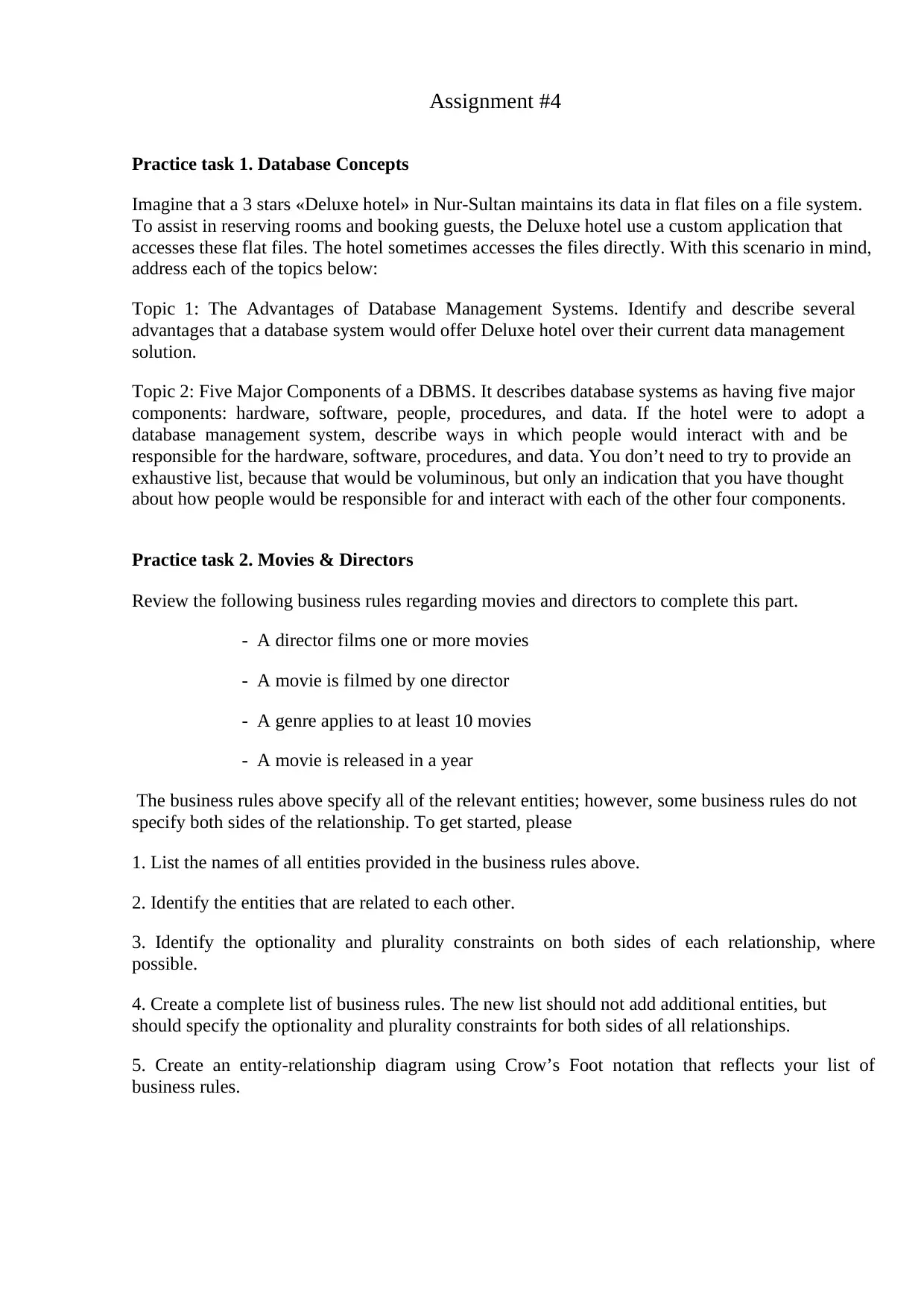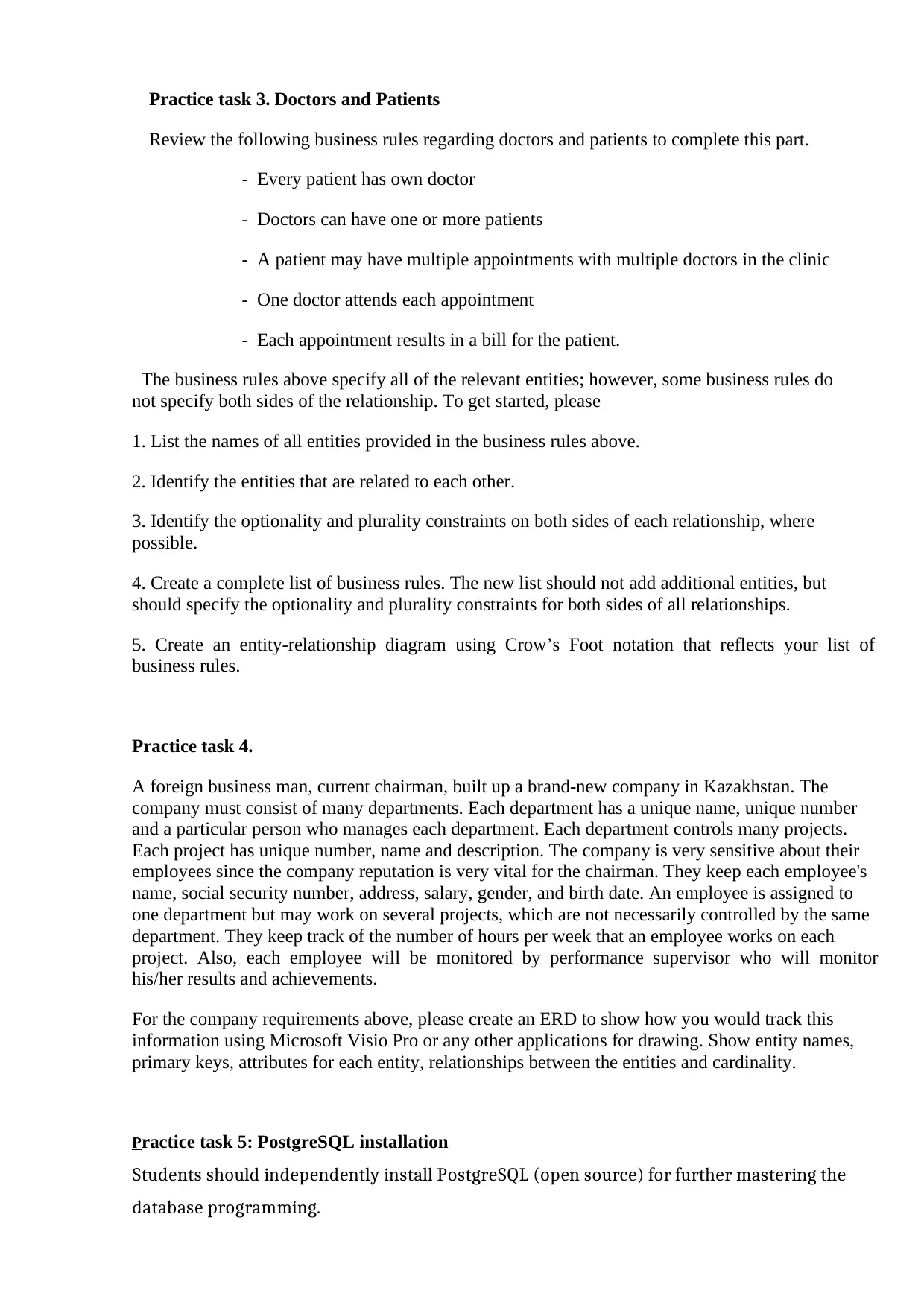Database Assignment 4: Database Concepts, ERDs, and PostgreSQL Setup
VerifiedAdded on 2020/10/09
|3
|834
|260
Homework Assignment
AI Summary
This assignment delves into database concepts and practical application through several tasks. The first task explores the advantages of a Database Management System (DBMS) for a hotel, comparing it to a flat file system, and examining the interaction of people with the hardware, software, procedures, and data within a DBMS. The subsequent tasks focus on database design, requiring the creation of Entity-Relationship Diagrams (ERDs) using Crow's Foot notation. These tasks involve analyzing business rules for scenarios including movies and directors, and doctors and patients, to determine entities, relationships, optionality, and plurality. Another task involves designing an ERD for a company, including departments, projects, and employee information. Finally, the assignment concludes with instructions for students to install PostgreSQL, an open-source database system, for further database programming practice. This assignment aims to provide a comprehensive understanding of database design and implementation.
1 out of 3







![[object Object]](/_next/static/media/star-bottom.7253800d.svg)